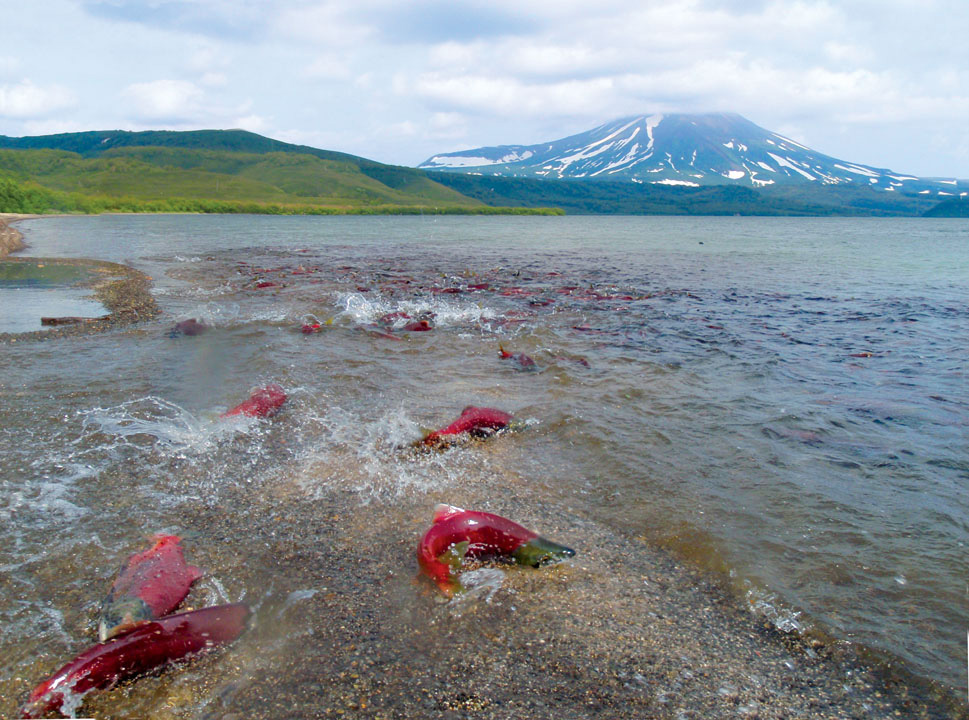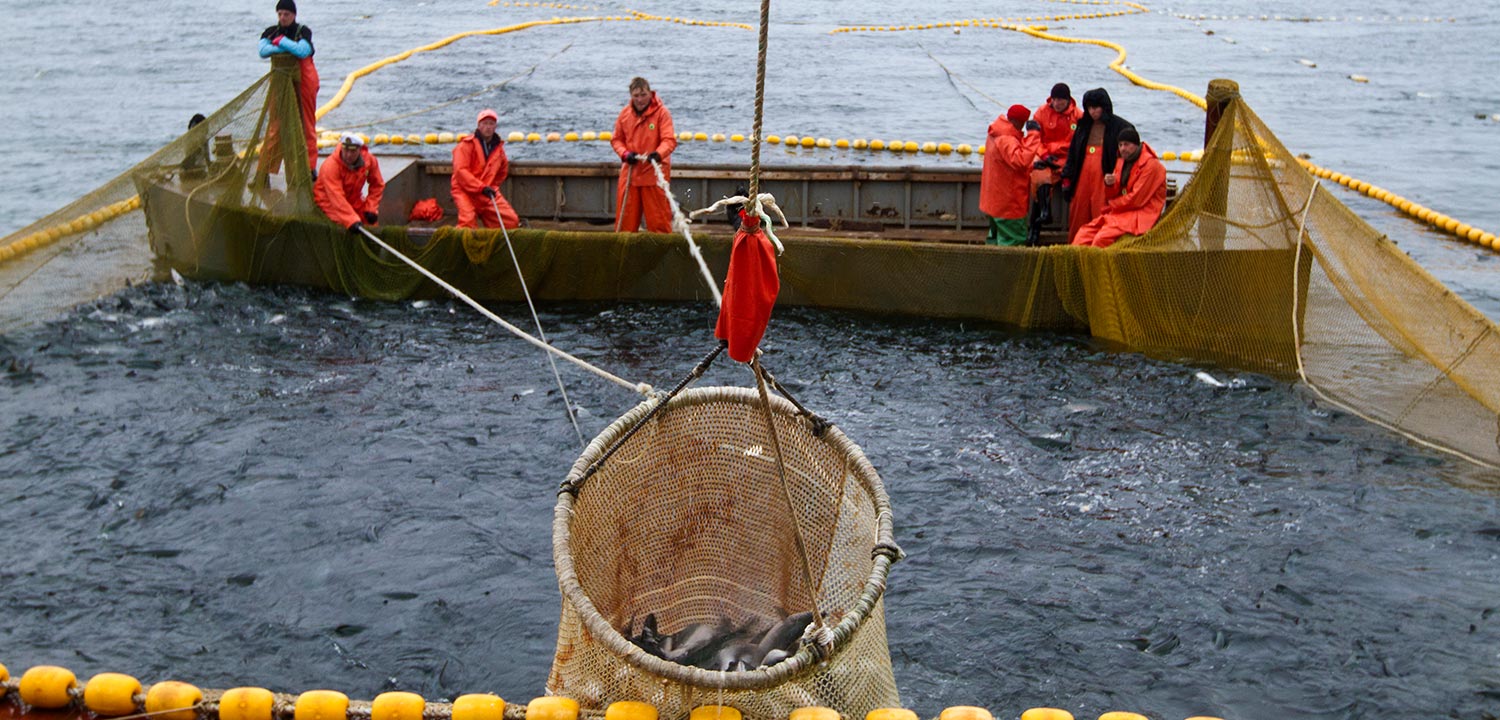Notes from the Field: My month in Kamchatka as an independent fisheries expert.
By Mihael Blikshteyn
A vast landscape stretched to the horizon as I peered out the small helicopter window. Interspersed with broad swaths of brown grass and snow were volcanoes, rivers and forests. This diversity of natural features unfolded during a mere hour-long flight from Petropavlvsk-Kamchatsky, the main city on the Kamchatka Peninsula, to Ozernaya, a tiny fishing town in southwest Kamchatka.

As a fisheries expert, I was returning to Russia for the first time in 20 years. I was also making my first-ever trip to Russia’s remote and captivating Kamchatka Peninsula – the Ozernaya River, specifically.
The Ozernaya sockeye fishery is the largest and most commercially significant sockeye salmon fishery in Asia. The headwaters of the Ozernaya River are in the South Kamchatka Strict Nature Reserve, one of the crown jewels of the Russian protected area system. WSC and the World Wildlife Fund (WWF) are now working in partnership with the commercial fishing companies in the lower river to ensure best fishing practices and the sustainability of this magnificent salmon resource.
Recently, two Ozernaya fishing companies, Vityaz-Avto and Delta, entered the Marine Stewardship Council (MSC) assessment process — a first for Kamchatka. If successful, the Ozernaya fishery will be recognized as sustainable by the world’s leading third party certification system. During the pre-assessment process, several data and observation gaps were identified, including the need for an independent on-the-ground expert to set up a bycatch monitoring program. The two fishing companies agreed to host an independent expert and provide all necessary information required for the MSC assessment process.
My job during this visit was to observe sockeye salmon fisheries to get a better sense of the two companies’ fishing philosophies and practices. I was also to monitor for any poaching activities and official anti-poaching efforts, as well as any other illegal or questionable activities. I wanted to engage community members and local stakeholders to assess the companies’ fishing activities and learn of any concerns the community might have.
Monitoring bycatch
One of my main responsibilities as a fisheries expert was to help the companies set up a program to systematically collect and record data on non-commercial species caught in coastal trap nets and in-river beach seines – the two types of gear typically used by fishing companies to catch sockeye returning to the Ozernaya River. These data are required as part of the MSC assessment. I had the opportunity to observe both methods.

A beach seine set starts with one end of the net held by a couple of fishermen upstream and the other deployed from a skiff (fishing regulations prohibit blocking more than two-thirds of the river channel). Once the net is set, a group of a dozen fishermen concentrate the fish by pulling the upstream end of the net toward shore, working their way downstream. Halfway through, a truck on the downstream end of the net pulls the rest of the net out.
Coastal set nets are a passive form of fishing where the net is set perpendicular to the shore line in the path of returning salmon and leads them into a double trap. Funnel entrances prevent fish from escaping. Each set net is served by a boat. When fish are sufficiently concentrated, they are scooped by a brail, attached to a power winch on the main boat.
Based on first-hand observations of the coastal trap and in-river beach seine fisheries, I concluded that the best practical locations to collect bycatch data were at the sorting lines of the fish-processing plants. There, one person would be assigned per shift to collect all bycatch and sort them into baskets according to the two fishing methods where they could then be counted.
Anti-poaching initiatives
One of my goals was to document any illegal fishing activities I observed along the Ozernaya River. During my visit I became acquainted with Ozernaya’s chief anti-poaching officer, Leonid Zaharov, a retired police officer who has worked on the river for several summers and knows it well. Zaharov’s anti-poaching brigade monitors the river almost daily during season, driving along the river to the border of the Kronskiy zakaznik, a federally protected reserve around the sockeye salmon spawning grounds (with their own anti-poaching brigades). I was fortunate to be able to accompany him on one of his trips. We came across a small group fishing with hand-held lines and Zaharov and his assistant confiscated their gear and politely explained that fishing regulations don’t allow for personal or sport take of salmon on Ozernaya River. Zaharov later explained that for small violations like this, education was the best response.
A bounty of sockeye

At the end of July, all fishing activity was suspended for sockeye salmon around Ozernaya River, in order to ensure enough fish were reaching their spawning grounds upstream. The suspension happened to coincide with the peak sockeye salmon run – good news for visiting WWF Kamchatka fisheries biologist Anatoly Dekshtein. Anatoly and I decided to monitor the salmon run for illegal fishing activity by walking the lower 10 kilometers (6.2 miles) of the river, where most commercial fishing occurs. Along the river we saw hundreds of sockeye salmon resting in slower waters by the river banks and a steady, paced stream of sockeye salmon moving upstream.
It takes about 4 days for fish to reach Kuril Lake from the river mouth and on the day we were there more than 350,000 sockeye salmon were counted moving into the lake, one of the largest such surges in recent history. It was inspiring to see such a bounty of wild sockeye. This also serves as a powerful reminder of the importance of supporting sustainable fisheries so we can ensure that wild salmon continue to return in such great numbers.
